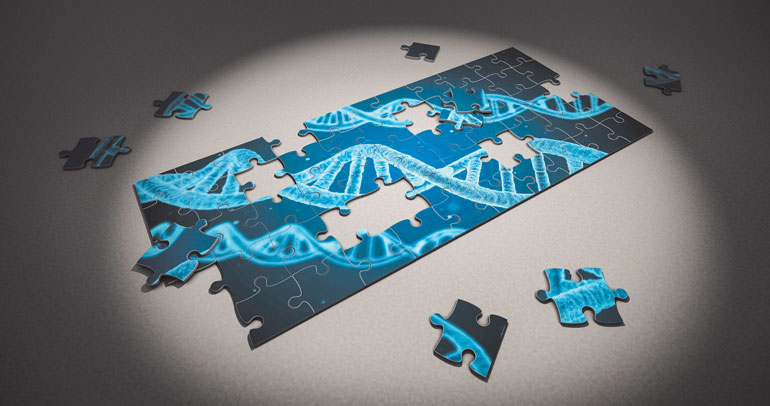Understanding the complex, multifaceted issues in healthcare

The scope of the pandemic continues to grow and disrupt every aspect of our lives. None is more evident than the disruptions being faced by the healthcare industry.
According to the World Health Organization (WHO), in 2020 alone, COVID-19 was responsible for at least three million excess deaths — deaths that are beyond what would have been expected under “normal” conditions.
The WHO further stated that the pandemic has likely increased deaths from other causes due to disruption to health service delivery and routine immunizations, fewer people seeking care, and shortages of funding for non-COVID-19 services. The second WHO “pulse survey” of 135 countries in March 2021 highlighted persistent disruptions at a considerable scale over one year into the pandemic, with 90% of countries reporting one or more disruptions to essential health services.
After all, due to the undue stress the crisis has placed on global healthcare systems, many of the patients with serious illnesses, those who would have been treated pre-pandemic, are inadvertently not getting the attention they deserve from overworked healthcare staff. Many fail to receive medical attention at all.
“All countries must have the necessary capacity and resources to accurately collect and use health data even in the midst of an ongoing crisis,” Dr. Tedros Adhanom Ghebreyesus, director-general of WHO, said.
“The COVID-19 pandemic has shown the importance of data and science to build back more resilient health systems and equitably accelerate towards our shared global goals.”
The pandemic has revealed significant gaps in countries’ health information systems. Clearly, these gaps are persistent issues that have only been revealed by the current crisis, but have been languishing for far longer. Inequalities by income, age, race, sex and geographic location are made larger as the complex, interconnected threats to global health and well-being are rooted in social, economic, political and environmental issues. Due to its scope, COVID-19 threatens to jeopardize the hard-won health and development gains made in recent decades.
To address those gaps, Mr. Ghebreyesus stressed the importance of national and sub-national health systems, as these systems comprise “the foundation of global health security.”
“Strong and resilient health systems are the best defense not only against outbreaks and pandemics, but also against the multiple health threats that people around the world face every day,” he said.
Navigating issues in the healthcare system
The challenges are daunting. According to the World Economic Forum, the world currently spends approximately $7.5 trillion on health each year, or 10% of global gross domestic product (GDP). While spending has increased steadily, dangerous public health gaps found in rural or conflict-ridden areas where access is difficult and infrastructure is lacking remain difficult to address.
Significant investments could alleviate some of the gaps. A study by the United Nations titled “Primary Health Care on the Road to Universal Health Coverage,” increasing spending on primary health care in just low- and middle-income countries by $200 billion annually could save 60 million lives.
Meanwhile, a shortage of trained healthcare workers is looming. The 2020 State of the World’s Nursing report found that the world would need six million more nurses by 2030 to reach global health targets, and such shortages would acutely impact low- and middle-income countries.
A recent WHO global assessment of health information systems capacity found that only half of countries include disaggregated data in their published national health statistical reports. Investing in strong health information systems, the report stated, is vital to ensure disaggregated data reaches decision-makers and achieve equitable health outcomes.
Creating robust, accessible healthcare for all
To improve access to data, the organization launched the World Health Data Hub to provide an interactive digital platform and trusted source for all global health data, offering easy access to powerful visualization tools that reveal trends, patterns and connections; and draw insights. It will also allow WHO member states to upload and review their data in a secure environment; will be scalable to allow different varieties, volumes and velocities of data; and will provide access to the latest predictive analytics technologies.
The Hub brings together all of WHO’s data assets including the Global Health Observatory, the GPW 13 Triple Billion dashboard, the health equity monitor, and the WHO Mortality Database.
Worldwide, healthcare leaders are stepping up. In McKinsey’s recent Global Leadership Survey which included more than 850 senior executives from nine industries, healthcare leaders indicated that throughout this crisis, they have made significant improvements in the way they communicate with employees, their organizations’ culture and purpose, and their ability to drive execution and accountability and make decisions at speed.
Furthermore, survey respondents noted several changes to catalyze greater organizational speed, including flattening the organization, empowering leaders closer to the work to make decisions, creating clarity and alignment around common objectives and milestones, maintaining the ability to collaborate effectively in remote or hybrid models, and improving access to and disseminating data across the enterprise.
“We are now less than nine years away from 2030,” Dr. Samira Asma, assistant director-general for the Division of Data, Analytics and Delivery for Impact at WHO, said.
“We know where the gaps are and we have the solutions to address them. What we need now is commitment and investment to accelerate progress and reach our goals.” — Bjorn Biel M. Beltran



